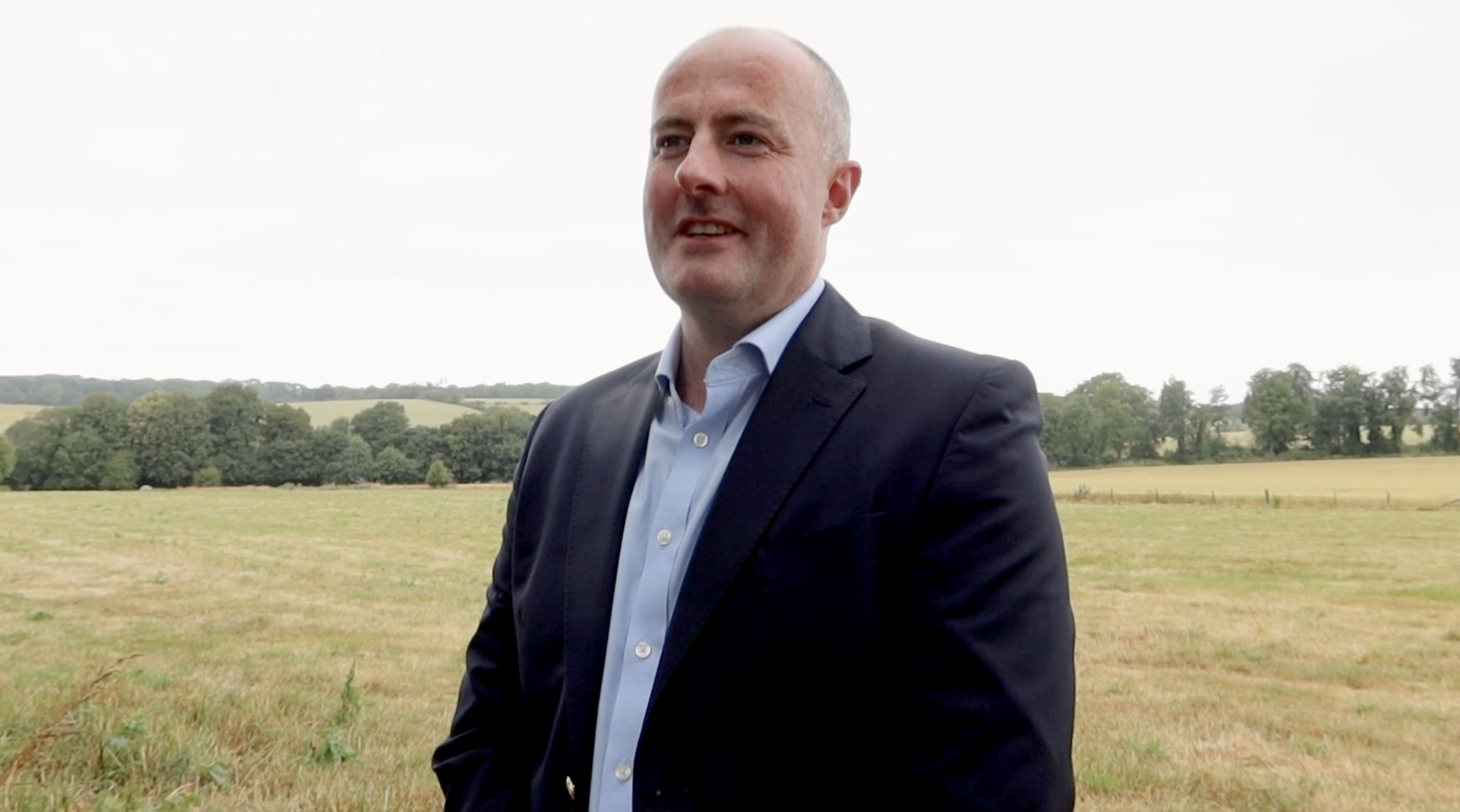National View
Growth in average arable and pasture land values across England and Wales accelerated in the second quarter of 2023 after a predictably quieter first quarter. The average value of arable land increased by a notable 2.6% during Q1 2023 to reach a £9,517/acre, while average pasture land values have grown by 2.3% to reach a record high of £7,683/acre.
Compared to Q2 2022, average arable land values have increased by 6.4% (£572/acre) and average pasture land values have increased by 4.4% (£325/acre). Average pasture land values have now recovered from the fall in value seen from mid-2016 until early 2019. Average arable land values remain marginally below their peak in Q2 2016 but could surpass this by the end of the year if the current rate of growth continues. Growth has been particularly strong in the last three years, with arable land values increasing by 12.8% overall (or 4.1% annualised) and pasture land values increasing by a robust 14.2% cumulatively (or 4.5% annualised).
A bullish second quarter is also reflected in the accelerated growth of prime land values. In the 12 months to Q2 2023, prime arable land values increased by 6.2% to reach £11,183/acre and prime pasture increased by 5.8% to £9,139/acre. However, we are often seeing land sell for prices well beyond these figures as buyers are increasingly willing to pay premiums for good quality, well-positioned land. Again, the last three years has seen significant growth in prime values, outpacing average values. During this period, prime arable values have increased by 13.4% overall (or 4.3% annualised) and prime pasture values have grown by 15.0% (or 4.8% annualised).
£9,517
per acre
Average
arable land
value in Q2
Q-ON-Q
CHANGE
+2.6%
+6.4%


y-ON-y
CHANGE
£7,683
per acre
Average
pasture land
value in Q2
Q-ON-Q
CHANGE
+2.3%
+4.4%
y-ON-y
CHANGE


Farmland
Market Update
Q2 2023
Key data and expert commentary
outlining trends in the farmland market

“Average arable land values remain marginally below their peak in Q2 2016 but could surpass this by the end of the year if the current rate of growth continues.”
FIGURE 5
Input prices fall further
Source: Carter Jonas, AHDB, Farmers Weekly, Defra, ONS, OPEC
Input
Outputs










Crude Oil
Fertiliser
Red Diesel
Feed Wheat
Oilseed
Rape
Milk
Beef
Pork

CRUDE OIL
Unit
Latest data
Date
Quarterly change
Annual change
£/barrel
59.6
June '23
-7.8%
-37.7%

Fertiliser
Unit
Latest data
Date
Quarterly change
Annual change
£/tonne
339.3
June '23
-27.0%
-54.0%

Red Diesel
Unit
Latest data
Date
Quarterly change
Annual change
pence/litres
78.45
June '23
-18.5%
-32.2%

Feed Wheat
Unit
Latest data
Date
Quarterly change
Annual change
£/tonne
193.9
June '23
-11.2%
-35.7%

oilseed rape
Unit
Latest data
Date
Quarterly change
Annual change
£/tonne
368.7
June '23
-12.8%
-43.0%

MILK
Unit
Latest data
Date
Quarterly change
Annual change
pence/litre
37.6
May '23
21.8%
7.8%

BEEF
Unit
Latest data
Date
Quarterly change
Annual change
pence/kg dw
482.6
June '23
-0.9%
8.9%

Pork
Unit
Latest data
Date
Quarterly change
Annual change
pence/kg dw
216.4
May '23
4.4%
19.6%


Click a location for
a local overview










East of England
Arable
Pasture
£6,900
£6,250
£10,900
£9,500
£8,900
£7,100
0.6%
1.4%
4.7%
3.6%
Low
£ / acre
Prime
£ / acre
Average
£ / acre
Quarterly %
Annual %
East of England land values
North West
Arable
Low
£ / acre
Prime
£ / acre
£ / acre
Quarterly %
Annual %
Average
£8,000
£6,500
£12,000
£10,000
£10,000
£8,000
0.0%
0.0%
5.3%
1.6%
Pasture
EMAIL DEBORAH
01539 814914
Partner
Deborah Lund

North West land values
Wales
Arable
Low
£ / acre
Prime
£ / acre
£ / acre
Quarterly %
Annual %
Average
£8,250
£4,250
£10,000
£8,500
£8,500
£6,500
0.0%
0.0%
0.0%
0.0%
Pasture
EMAIL Hugh
01248 360417
Partner
Hugh O’Donnell

Wales land values

North East
Arable
Low
£ / acre
Prime
£ / acre
£ / acre
Quarterly %
Annual %
Average
£6,500
£4,250
£8,750
£6,500
£7,500
£5,750
4.2%
0.0%
7.1%
0.0%
Pasture
EMAIL Sam
01423 707801
Associate Partner
Sam Johnson

North East land values

Yorkshire and the Humber
Arable
Low
£ / acre
Prime
£ / acre
£ / acre
Quarterly %
Annual %
Average
£8,000
£5,500
£11,000
£7,250
£9,000
£7,000
1.7%
2.2%
2.9%
3.7%
Pasture
EMAIL Sam
01423 707801
Associate Partner
Sam Johnson


Yorkshire and the
Humber land values
East Midlands
Arable
Low
£ / acre
Prime
£ / acre
£ / acre
Quarterly %
Annual %
Average
£8,000
£6,500
£11,000
£9,000
£9,000
£7,800
2.3%
0.6%
5.9%
4.0%
Pasture
East Midlands land values
West Midlands
Arable
Low
£ / acre
Prime
£ / acre
£ / acre
Quarterly %
Annual %
Average
£9,250
£7,000
£13,000
£11,000
£11,000
0.0%
0.0%
10.0%
5.9%
Pasture
EMAIL ANGHARAD
01213 899685
Senior Surveyor
Angharad Llewellyn

West Midlands land values
South East
Arable
Low
£ / acre
Prime
£ / acre
£ / acre
Quarterly %
Annual %
Average
£9,750
£8,000
£12,000
£9,500
£10,750
£9,000
4.9%
2.9%
7.5%
5.9%
Pasture
EMAIL Andrew
07880 084633
Partner
Andrew Chandler


Wales

West Midlands

East Midlands

South west

South east

East of england

Yorkshire & the humber

North east

North west
Get in touch
Click a trend for more info
EMAIL MARK
01223 346628
Partner
Mark Russell


EMAIL MARK
01223 346628
Partner
Mark Russell






South West
Arable
Low
£ / acre
Prime
£ / acre
£ / acre
Quarterly %
Annual %
Average
£10,000
£7,000
£12,000
£11,000
£11,000
£9,000
0.0%
12.5%
12.5%
12.5%
Pasture
EMAIL David

01823 428591
Partner
David Hebditch

South West land values
EMAIL Andrew
07880 084633
Head of Rural Agency
Andrew Chandler



An influx of new, publicly marketed agricultural land brought much-needed supply to the market in the second quarter. Levels of new supply in Q2 2023 were 6.9% higher than in Q2 2022, rising from 32,830 acres to 35,110 acres. This brings the total supply for the first half of the year to 42,578 acres (including 7,468 acres in Q1), surpassing the first half of 2022 (which totalled 36,512 acres) by 16.6%.
However, new supply remains significantly below longer-term averages. Newly marketed farmland supply in Q2 2023 was considerably lower than the 10-year average for Q2, down 29.2%. It was also 26.0% lower than the 10-year average for the first half of the year. It is important to note that a large number of properties are being marketed and sold off-market, meaning that the true level of supply is likely higher than the figures being reported. In spite of this, it does point to a sustained shortage of supply. With demand remaining robust from a diverse range of buyers, the lack of available land continues to constrain activity and push up values.
The market is still being driven by cash buyers, many of whom are holding rollover funds and are yet to find suitable land to invest in. Yet, the market is not completely sheltered from the broader economic situation, as those buying with a large amount of finance are likely to be hesitant. The increasing cost of borrowing may also mean that more land comes to the market as farming businesses with debt reassess their cashflows. But, with a waiting pool of capital and demand showing no signs of slowing, we can expect that increased supply would be met with healthy interest.
New supply surpasses last year
Commodity price trends

Sheep
Chicken

£1,000
£2,250
£1,700
7.9%
54.5%
Hill
£500
£1,500
£1,000
0.0%
0.0%
Hill
£1,800
£2,900
£2,250
4.7%
7.1%
Hill
£11,000
£14,000
£12,500
2.0%
2.0%
Lifestyle
£1,800
£3,850
£2,750
5.8%
5.8%
Hill
£10,750
£15,750
£13,250
1.9%
1.9%
Lifestyle
£11,000
£13,000
£12,000
0.0%
4.3%
Yorkshire Wolds
£13,250
£25,000
£16,750
0.0%
0.0%
Lifestyle
£8,000
£14,000
£10,000
11.1%
11.1%
Silts and Fen
£25,000
£16,000
0.0%
6.7%
Lifestyle
£13,500
£22,000
£16,750
0.0%
0.0%
Lifestyle
£8,000
£14,000
£10,000
8.1%
11.1%
Silts and Fen
£16,000
£35,000
£22,500
12.5%
12.5%
Lifestyle

SHEEP
Unit
Latest data
Date
Quarterly change
Annual change
pence/kg dw
650.6
June '23
20.1%
-1.3%

CHICKEN
Unit
Latest data
Date
Quarterly change
Annual change
pence/kg dw
382
May '23
3.2%
22.8%
EMAIL SOPHIE
020 7493 0685
Senior Research Analyst
Sophie Davidson



FIGURE 2: Annualised Growth of Average Land Values in England and Wales
FIGURE 3: Annual Publicly Marketed Farmland Supply
FIGURE 2
Annualised Growth of Average Land Values in England and Wales
FIGURE 1
FIGURE 1: Average Land Values in England and Wales
South East land values
Input prices have plummeted from their peaks, with some commodities now trading at pre-Ukraine war levels. A sharp decline in wholesale energy prices has come as a welcome relief to farmers, who have been facing inflated production costs. Against Q1 2023, the price of crude oil (£/barrel) was 7.8% lower in Q2 2023, representing a fall of 37.7% from its peak in June 2022. In the three months to June, red diesel fell by 18.5% and diesel’s pump price was down 12.8%. This is 35.5% and 26.3%, respectively, below the record highs seen in July 2022.
The steep increase in fertiliser prices last year was partly driven by rocketing gas prices, which is a key input in fertiliser production. Mirroring the fall in energy prices, fertiliser fell to its lowest price since 2021 in Q2 this year. The price of imported ammonium nitrate (AN) in June was significantly lower (-27.0%) than three months earlier and over half (-54.0%) of what it was in June 2022.
Feed wheat has also seen a notable fall in value across the quarter. In the three months to June, feed wheat prices fell by 11.2%. This represents a 35.7% decrease against June 2022, benefitting the profit margins of farmers buying wheat. However, with import prices falling, UK produce will become less competitive.
FIGURE 4: Cumulative Publicly Marketed Farmland Supply
FIGURE 3: Year-to-Date Publicly Marketed Farmland Supply


Cumulative Publicly
Marketed Farmland Supply
FIGURE 4
Year-to-Date Publicly
Marketed Farmland Supply
FIGURE 3
Year-to-Date Publicly
Marketed Farmland Supply
FIGURE 3
Cumulative Publicly
Marketed Farmland Supply
FIGURE 4
£12,500
£9,000
Average Land Values in
England and Wales
Annualised Growth of Average Land Values in England and Wales


The challenging economic conditions continue unabated, putting prolonged pressure on many farming businesses. Forecasters have revised inflation expectations upwards for 2023 (from 3.7% in March to 4.7% in June on the CPI measure, according to the Treasury-compiled consensus) and, with core inflation remaining stubbornly high, it looks increasingly likely that interest rates will continue to rise. Nonetheless, it is encouraging that market sentiment has held firm, farmland continues to be highly sought after and values are being driven upwards.
Carter Jonas continues to monitor the changing nature of the farmland market and the influences on land values in England and Wales.
We have seen annual uplifts across almost all regions, with some markets more active than others in recent months. The greatest increases have been seen in the South West and South East, where the market has witnessed strong demand, and values have grown at a faster rate than national averages. There have also been increases in the amount of silt and fen land in the East being traded, pushing average values up 11.1% in the 12 months to Q2 2023. Upland values in the North and Yorkshire and the Humber have shifted upwards too and are now 13.2% greater than the same quarter last year, aided by the reassurance received this quarter by upland farmers on access to government schemes.
The agricultural sector has been a focus of political attention this quarter. In May, the Prime Minister hosted the first ‘Farm to Fork’ summit, bringing together food industry leaders, farmers and policymakers. The government also responded to the independent ‘Rock Review’ in May, outlining measures aimed at sustaining the tenant farming sector. The reaction from the industry has been varied, with many watching closely to see if commitments are actioned.
Despite the recent declines, input prices have been on an upward trend over the longer term. When annualised over two years, red diesel has increased by a substantial 10.8% (or 22.7% overall) and fertiliser (AN imported) has seen a 7.9% annualised increase over two years (or 16.5% cumulatively). Annualised, the price of crude oil has increased by 7.8% over two years (16.2% overall). Feed wheat has seen a slower annualised increase of 2.6% (or 5.2% cumulatively).
However, political turmoil in Russia illustrated the ongoing volatility of global markets. Likewise, markets remain reactive to the prospects of the Black Sea Grain Initiative, with growing apprehension that renewing the deal could be more difficult than past renewals when it expires in July. Both have sparked renewed concerns around the future of grain and energy markets.
Meanwhile, some output prices have continued to climb, offering improved profitability for some sectors. Pork and chicken prices have reached record highs this quarter, with pork prices up 4.4% and chicken prices up 3.2% in the three months to May. Increases over the year have been substantial, with pork prices increasing by 19.6% and chicken by 22.8%. A decrease in production volumes has been forecast for both markets, which is likely to keep prices elevated. For pork, in particular, AHDB forecasts a 15% fall in production from 2022 to the end of the year. Meanwhile, data from Defra shows a 1.6% annual decrease in commercial broiler chicks for May, suggesting supply could decline.
Sheep prices have increased by 20.1% over the quarter. However, prices did drop by 7.8% in June after reaching a record high in May. Compared to June 2022, sheep prices were 1.3% lower in June 2023. Beef prices also reached their highest point in May, but dropped in June to end the quarter 0.9% down on Q1. Over the year, prices have increased by 8.9%.
Dairy farmers continue to suffer, despite a contraction of the UK dairy herd and a number of producers leaving the sector. However, data from AHDB shows that production has been increasing since Q4 2022, and milk prices have been falling. In the three months to May, milk prices decreased by a significant 21.8% and, year-on-year, the price has fallen 7.8%. After months of falling prices, Arla, the UK’s largest dairy co-operative, announced that it would hold its farmgate milk price in July, indicating that prices may be starting to bottom out.
Farmland
Market Update
Q4 2022
Key data and expert commentary
outlining trends in the farmland market

(Please view desktop version for graphs)

£9,517
per acre
Average
arable land
value in Q2
Q-ON-Q
CHANGE
+2.6%
+6.4%


y-ON-y
CHANGE

£7,472
per acre
Average
pasture land
value in Q4


Q-ON-Q
CHANGE
+2.3%
+4.4%
y-ON-y
CHANGE
Source: Carter Jonas, AHDB, Farmers Weekly, DEFRA, ONS, OPEC
Commodity price trends
Stabilising commodity prices
Inputs
Outputs












Crude Oil
Fertiliser
Red Diesel
Milk
Beef
Feed Wheat
Oilseed Rape
Pork
Sheep
Chicken

CRUDE OIL
Unit
Latest data
Date
Quarterly change
Annual change
£/barrel
59.6
June '23
-7.8%
-37.7%

Fertiliser
Unit
Latest data
Date
Quarterly change
Annual change
£/tonne
387.1
May '23
-27.0%
-54.0%

Red Diesel
Unit
Latest data
Date
Quarterly change
Annual change
pence/litres
78.45
June '23
-18.5%
-32.2%

Feed Wheat
Unit
Latest data
Date
Quarterly change
Annual change
£/tonne
193.9
June '23
-11.2%
-35.7%

OILSEED RAPE
Unit
Latest data
Date
Quarterly change
Annual change
£/tonne
368.7
June '23
-12.8%
-43%

MILK
Unit
Latest data
Date
Quarterly change
Annual change
pence/litre
37.6
May '23
21.8%
7.8%

BEEF
Unit
Latest data
Date
Quarterly change
Annual change
pence/kg dw
482.6
June '23
0.9%
8.9%

Pork
Unit
Latest data
Date
Quarterly change
Annual change
pence/kg dw
216.4
May '23
4.4%
19.6%

SHEEP
Unit
Latest data
Date
Quarterly change
Annual change
pence/kg dw
650.6
June '23
20.1%
-1.3%

CHICKEN
Unit
Latest data
Date
Quarterly change
Annual change
pence/kg dw
382
May '23
3.2%
22.8%
Tap a trend for more info

Tap a location for
a local overview












WEST MIDLANDS

NORTH EAST

SOUTH WEST

WALES

NORTH WEST

YORKSHIRE & HUMBER

EAST MIDLANDS

EAST OF ENGLAND

SOUTH EAST
2019


EMAIL DEBORAH
CLOSE

01539 814914
Partner
Deborah Lund
View on desktop for a full overview
North West land values
2019
CLOSE

View on desktop for a full overview
01423 707801
Associate
Sam Johnson


EMAIL Sam
North East land values
2019
CLOSE

View on desktop for a full overview
01423 707801
Associate Partner
Sam Johnson


EMAIL Sam
Yorkshire & The Humber land values
2019
CLOSE

View on desktop for a full overview

EMAIL Hugh
01248 360417
Partner
Hugh O' Donnell

Wales land values
2019

CLOSE

View on desktop for a full overview
EMAIL mark
01223 346628
Partner
Mark Russell

East Midlands land values
2019
CLOSE

EMAIL EDWARD
01213 899685
Senior Surveyor
Angharad Llewellyn

View on desktop for a full overview
West Midlands land values
2019
CLOSE

View on desktop for a full overview

EMAIL mark
01223 346628
Partner
Mark Russell

East of England land values
2019
CLOSE

View on desktop for a full overview

07880 084633
Partner
Andrew Chandler

EMAIL Andrew
South East land values
2019
CLOSE

View on desktop for a full overview

EMAIL david
01962 833386
Partner
David Hebditch

South West land values

Get in touch
020 7493 0685
Senior Research Analyst
Sophie Davidson

EMAIL SOPHIE

EMAIL Andrew

07880 084633
Head of Rural Agency
Andrew Chandler

Please note that values vary depending on the quality of the land and local dynamics, among many other factors. Speak to your regional expert (at the bottom of this page) for location-specific advice.
In June, Defra published an independent review into labour shortage in the food supply chain. The report highlights the severe labour shortages being experienced by the farming sector and recognises timely action is required to ensure the sector has access to a skilled workforce. According to data from the ONS, employment in agriculture, forestry and fishing was 19.3% below its pre-pandemic levels in January-March 2023, and 18.7% lower than the 20-year average. The report makes several recommendations to address the shortage, including more consideration to seasonal work visas, increasing the number of apprenticeships and training schemes, and investing in automation.
Meanwhile, the cost of labour has been increasing. Average weekly earnings have rising by 7.3% in
the 12 months to May 2023, or 12.9% compared to pre-pandemic levels (three month average, excluding bonuses, ONS). The scarcity of workers in the agricultural industry looks likely to threaten productivity over the coming months and push up the cost of labour further, putting pressure on farming businesses.
There have also been falls in oilseed rape prices, following the downward trend of wheat and fertiliser prices (commodities that also saw prices greatly impacted by the war in Ukraine). Prices fell by 12.8% over the quarter and are down 43.0% on June 2022.
While input costs have fallen significantly from their peaks, some sectors will benefit from increased output prices. However, dairy and oilseed rape farmers are still facing continued falls. The outlook for production levels and demand in the coming months is uncertain, with prices likely to be volatile and heavily dependent on the performance of global markets.
Farmland Market Update
South East
Each quarter, we’ll give you a more detailed viewpoint from one of our regional experts. This quarter, we hear from Andrew Chandler on what’s going on in the South East
of England.

